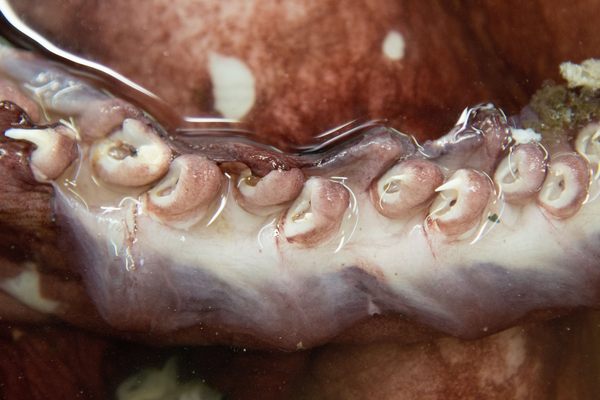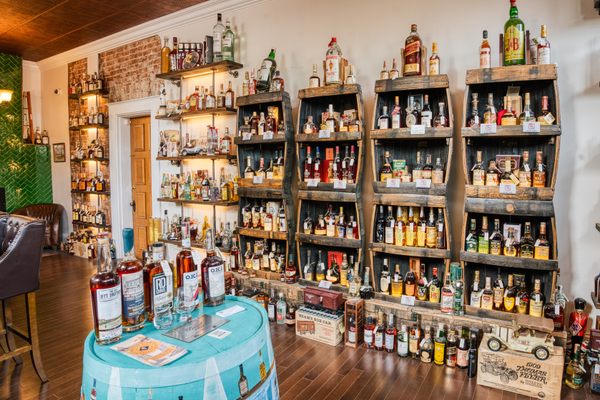Tea Punch Was the First Cocktail
This boozy brew used to be the British and American drink of choice.
THIS ARTICLE IS ADAPTED FROM THE JUNE 8, 2024, EDITION OF GASTRO OBSCURA’S FAVORITE THINGS NEWSLETTER. YOU CAN SIGN UP HERE.
Cocktail aficionados know that a Long Island Iced Tea contains no tea. It gets its tea-like color from dark liquor and cola (it also might not be from Long Island, but that’s another story).
These days, you don’t have to look far to find alcoholic beverages that actually are made with tea. Bartenders around the world mix Earl Grey martinis or chai-spiced White Russians, while the beverage company Owl’s Brew has been selling canned tea cocktails in flavors like jasmine and blackberry since 2013.
It’s easy to see why tea makes a pleasing addition to a mixed drink. Aside from its flavor, tea provides herbal, astringent notes from tannins and acids. But you might be surprised to learn that tea cocktails are far from a recent trend.
The Origins of Punch

As early as 1632, traders employed by the British East India Company were drinking a beverage known as “punch.” Considered the first modern mixed drink, punch was likely invented due to the scarcity of wine and beer in English merchant outposts in Asia. Distilled spirits kept better on long voyages and took up less space, but had to be diluted with available ingredients to create something sippable.
A rhyme said to date from the 18th century provides the basic ratios for “naval punch”: One of sour, two of sweet, three of strong, and four of weak. Originally, “sour” meant citrus juice, “sweet” meant sugar or molasses, and “strong” referred to arrack, a South and Southeast Asian liquor distilled from coconut or sugarcane. “Weak” could be water, but was often tea, such as green, black, or orange Pekoe.
With the optional addition of spices, the beverage had five ingredients, and one theory states that the word “punch” derives from panch, Hindi for “five,” although it may also have come from “puncheon,” a type of cask in which liquor was stored.
When mariners brought tea punch recipes back to England in the mid-1600s, the beverage became popular among the wealthy financiers of sea voyages and others who could afford its imported ingredients. As these ingredients became more widely accessible, both tea and punch became mainstays.
By 1750, the two drinks were consumed widely enough that English physician Thomas Short addressed both in a treatise on the medicinal properties of beverages. Short extolled the virtues of tea, but not punch, writing that adding alcohol to tea “tends to make its Use injurious, where it really would not be.”
American Punch

Tea punch spread to Britain’s American colonies, where it continued to be imbibed well after the Revolution as part of the distinct tea culture of the early United States. American punch was distinguished from British versions of the beverage by the use of green tea, the tea of choice in America up until the 1920s. And while the original British punch was often hot, American tea punch could be iced.
The option to serve hot or cold is specified in a baffling 1839 punch recipe from Kentucky, which combined red wine or champagne with cream, green tea, and a tremendous quantity of sugar. Iced tea wouldn’t be served without booze in it until the Saint Louis World’s Fair in 1904. However, both British and American punches were typically prepared in large quantities and served in a punch bowl.
By the late 18th century, rum had replaced arrack as the liquor of choice for punch due to rum production in the Caribbean and other British colonies. But tea punch could be made with whatever spirit was on hand. An American recipe for “Regent’s Punch” from 1815, said to give drinkers a “mad, delirious dizziness,” contains arrack, brandy, champagne, and rum in addition to sugar, citrus juice and green tea.
What Happened to Punch?

The rise of modern bar culture in the mid-1800s led to the side-lining of punch. Taverns and coffeehouses where people gathered for long periods socializing around a punch bowl were replaced by restaurants and bars where individual drinks were made to order, an adjustment to the faster pace of industrialized life. Since tea was brewed by the pot until 1904, when the first tea bags hit the market, tea-based punch didn’t carry over easily to this new format.
Cocktail historian David Wondrich, in his book Imbibe, lists 1670 to 1850 as the golden years of punch’s popularity. In 1853, Charles Dickens—who published his own recipe for rum punch—lamented the lonely appearance of stacked porcelain punch bowls “no longer asked for” in the corner of a bar.
However, tea punch didn’t disappear altogether. The first British book of cocktail recipes, published by William Terrington in 1869, contains numerous examples of “cups” (mixed drinks) made with tea. British soldiers and later Royal Air Force pilots were issued “gunfire”—a mixture of rum and tea—as part of official rations up until World War 2. On military holidays, Australian soldiers may still start the day with this mixture as part of a traditional “gunfire breakfast.”
In America, the long relationship between alcohol and tea took on a new dimension during Prohibition, when some establishments served illegal liquor in teapots to avoid suspicion. Some former speakeasies and modern bars with a Roaring Twenties theme still serve cocktails in teacups today.
As modern bartenders look towards the past for inspiration, tea punch is beginning to see a comeback in recent years. Establishments like Washington DC’s Fountain Inn and London’s Punch Room now serve modern, updated versions of the classic punches of the 18th and 19th centuries, distinct from the sugary and usually tea-free descendants we call “punch” today.
If you’re hankering to try some tea-based punch yourself, there are numerous historic recipes to choose from, such as the below recipe from the 1860s, which adds drama by setting the alcohol on fire.
Flaming Tea Punch
Adapted from How to Mix Drinks by Jerry Thomas (1862)
- Prep time: 20 minutes
- Cook time: 0 minutes
- Total time: 20 minutes
- 6 servings
Ingredients
- 1 cup of brandy
- 1 cup of rum
- 1/2 cup of sugar
- The juice of one lemon
- 4 cups of strong, hot green tea
Instructions
-
Mix together the brandy, rum, sugar, and lemon juice in a large heat-safe bowl. Stir it with a spoon.
-
Put the bowl into the microwave and heat it for two minutes. Then, heat it in 20-second intervals, checking regularly, until the mixture is gently steaming.
-
Stir the mixture again to make sure the sugar has dissolved, and carry it to a surface cleared of anything flammable. The punch will burn very hot, with leaping flames, so be very careful. Watch your fingers!
- Light the fumes with a long lighter or match. Using a long ladle, carefully spoon in the hot tea, stirring it once in a while. When the tea has been completely incorporated, blow out any remaining flames and serve hot.
Gastro Obscura covers the world’s most wondrous food and drink.
Sign up for our email, delivered twice a week.




























Follow us on Twitter to get the latest on the world's hidden wonders.
Like us on Facebook to get the latest on the world's hidden wonders.
Follow us on Twitter Like us on Facebook